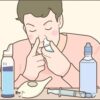
Chronic obstructive pulmonary disease is still incurable. The patient’s condition can only be relieved by improving the living environment and medicines. The treatments of COPD need to pay more attention on.
Patients with COPD cannot inhale high concentrations of oxygen. The standard of oxygen therapy is to maintain the blood oxygen content range of 89-92%.
The main goals of treatment can be symptom improvement and risk reduction. In the stage of improving symptoms. The main purpose is to relieve symptoms. And improve exercise tolerance. Final improve quality of life and health status.
In this phase of risk reduction, the main goals are to prevent disease progression first. And prevent acute exacerbations. Finally reduce mortality.

The treatment methods of COPD are mainly drug treatment and non-drug treatment.
Drug Treatment
Patients must take drug treatment on time according to the doctor’s instructions. Then they cannot stop or adjust the dose and frequency of the drug without authorization. In addition to regular medication, the correct inhalation of medication is the focus of treatment.
Patiens can take the initiative to confirm with the doctor or health education nursing staff. Whether they use the medicine correctly every time they return to the clinic. Commonly used drugs are:
- Bronchodilator
- expectorant
- Steroid
- Antitussive
- antibiotic
Bronchodilator inhalation devices
- pressure metered dose inhaler
- metered dose inhaler
- dry powder inhaler
- Soft mist spray inhaler
Non-drug Treatment
Non-drug treatments are based on the following methods:

1. Quit smoking and stay away from secondhand smoke
Smoking is the main cause of COPD. In order to prevent the continued rapid deterioration of lung function. It is necessary to quit smoking.
2. Vaccination
Influenza and Streptococcus pneumoniae vaccines are recommended. In order to reduce the acute exacerbation of the disease. And reduce the chance of severe complications and death.
3. Nutritional care
Malnutrition can cause cachexia, sarcopenia, and weight loss. Then leading to decreased lung function and exercise capacity. And an increased risk of acute exacerbations.
4. Pulmonary rehabilitation
Pulmonary rehabilitation may include chest expansion exercises, hand lifts against gravity, cycling, and walking. They can improve exercise capacity and reduce the feeling of shortness of breath.
5. Breathing training
The use of correct breathing methods can improve breathing difficulties and activity, such as
- pursed-mouth breathing (inhale through the nose, purse the mouth into a circular shape and slowly exhale the air)
- abdominal breathing (the diaphragm drives breathing, and should be used when inhaling. The patient’s abdomen is bulging, and the abdomen is concave when exhaling).
6. Oxygen therapy
When the patient’s lungs have been unable to absorb enough oxygen from the air. They can use oxygen according to the doctor’s instructions. Buying a suitable oxygen concentrator can help a lot.




Recent Comments